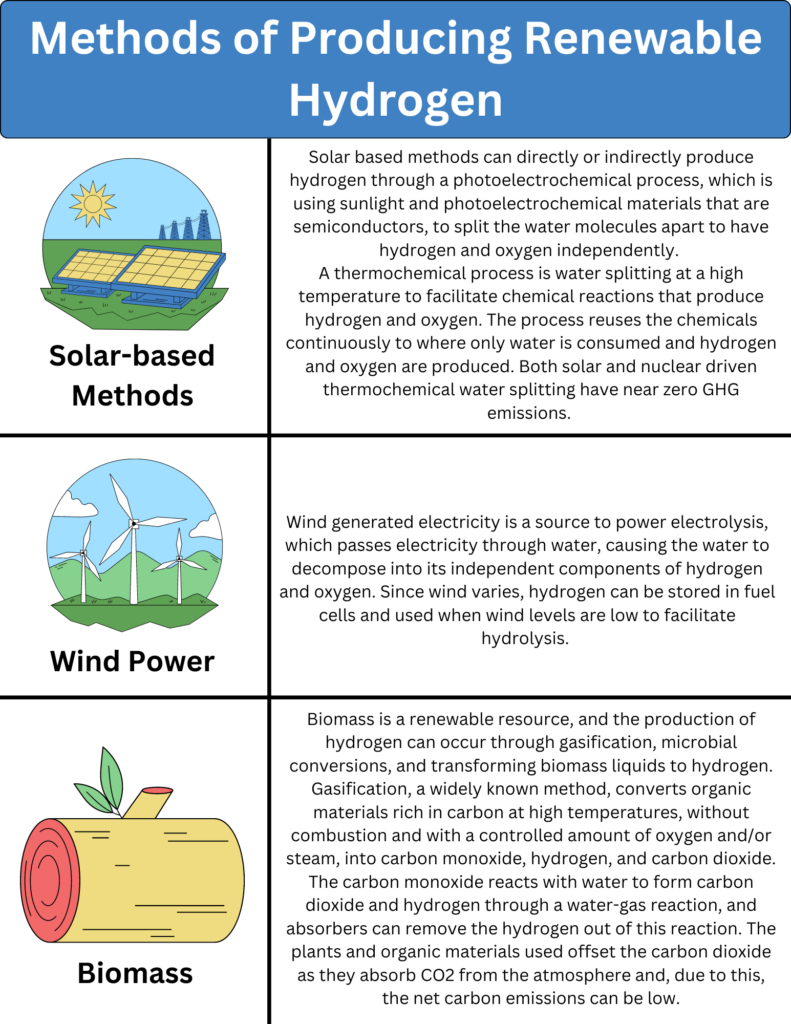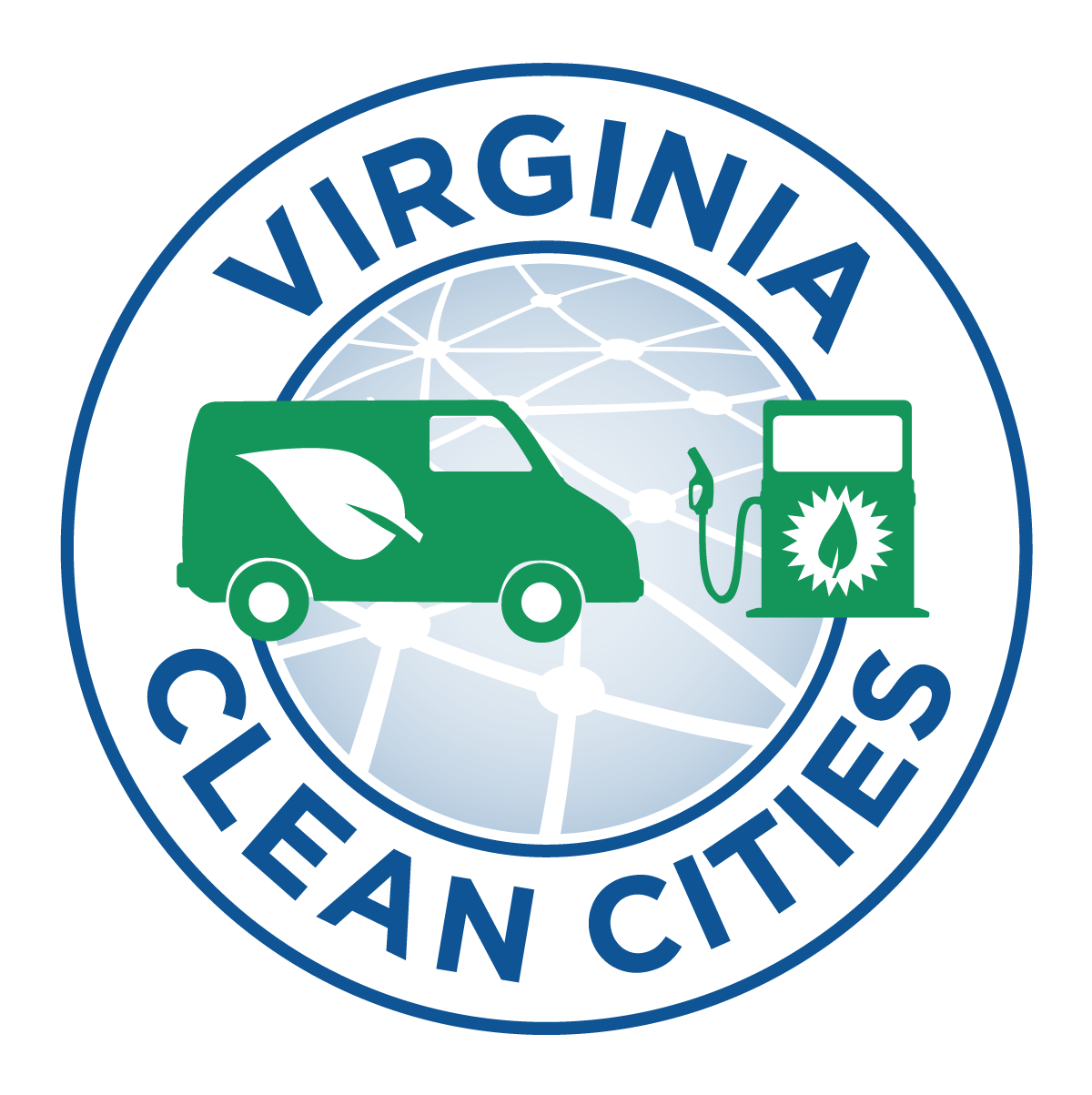What is a Hydrogen Fuel Cell?
Hydrogen fuel cells were invented in 1839 and have enjoyed a long life of powering scientific and government equipment over the past century. Hydrogen fuel cells powered the Gemini and Apollo space missions and provided power to the Space Shuttle and many smaller vehicles. Hydrogen fuel cell technology has been tested and numerous vehicle manufacturers are bringing commercial fuel cell electric vehicles to today’s alternative fuel market. Laboratories throughout the country, including in Virginia, are continuing to perfect fuel cells for low cost commercial use through improvements in technology.
Hydrogen (H2) is the simplest and lightest fuel, and is in a gaseous state at atmospheric pressure and ambient temperature. Hydrogen may contain low levels of carbon monoxide and carbon dioxide, depending on the source. Hydrogen is being explored for use in combustion engines and fuel cell electric vehicles. On a volumetric basis, the energy density of hydrogen is very low under ambient conditions. This presents greater transportation and storage hurdles than for liquid fuels. Storage systems being developed include compressed hydrogen, liquid hydrogen, and physical or chemical bonding between hydrogen and a storage material (for example, metal hydrides).
Like batteries, fuel cells convert chemical energy into electricity. The main difference between the two technologies is that fuel cells use external chemical fuel. For vehicles, hydrogen is commonly stored in tanks that are 20x stronger than regular gas tanks. The main type of fuel cell uses catalysts to convert hydrogen to protons and electrons. The electrons travel through a circuit containing an electric load (like an electric motor) and power the circuit while the protons flow through a membrane in the fuel cell. When the protons and electrons recombine, the byproduct is water. Hydrogen fuel cells can be built to practically any size, which means that they can power anything from a spacecraft to a truck to a cell phone.
The ability to create hydrogen from a variety of resources, and its clean-burning properties, make it a desirable alternative fuel. Although there is no significant transportation distribution system currently for hydrogen transportation use, we can transport and deliver hydrogen for early market penetration using the established hydrogen infrastructure; for significant market penetration, the infrastructure will need further development.
How is Hydrogen for Transportation Fuel Made?
Hydrogen can be produced using diverse, domestic resources including fossil fuels, such as natural gas and coal (with carbon sequestration), nuclear, biomass, and other renewable energy technologies, such as wind, solar, geothermal, and hydro-electric power. One common way to produce hydrogen is through electrolysis, which separates water into hydrogen and oxygen. Researchers are working to develop a wide range of technologies to produce hydrogen economically and in environmentally friendly ways.
In order to distinguish the methods of production, there are three common categories that hydrogen aligns with: gray, blue and green hydrogen.
- Gray hydrogen is produced using fossil fuels, which is a common route of production that accounts for roughly 95% of the hydrogen produced today. Fossil fuels are greenhouse gas emitting ingredients that emit CO2 gas into the atmosphere.
- Blue hydrogen uses fossil fuels as an ingredient of production, but it incorporates an aspect called carbon capture and storage. This route of capture decreases carbon dioxide emissions that would otherwise be projected into the atmosphere. Common production methods include steam methane reforming and coal gasification.
- Green hydrogen production, or referred to as renewable hydrogen, is hydrogen that is produced from clean energy sources. Commonly produced through electrolysis, which is splitting water into hydrogen and oxygen through electricity, can be costly, but it is the cleanest route of production. Common methods of facilitating electrolysis include wind, solar, and biomass power.
How is Renewable Hydrogen Made?
Renewable hydrogen is the production of hydrogen derived from cleaner sources. It can be created from both electricity derived from the grid or from natural resources. As a renewable natural resource, the formation process assumes more carbon neutral practices and is more efficient, clean, and reliable over traditional fuel sources including crude oils and fossil fuels. From a transportation perspective, the major benefit of hydrogen is that it is a zero emission fuel that emits water vapor as exhaust. This aspect assists the transition to a cleaner fuel option and significantly reduces greenhouse gas emissions in comparison to baseline fuels.
Below, the graphic features renewable methods of hydrogen production. These processes are a cleaner method to produce hydrogen that are either carbon neutral or emit zero emissions.

What are the Benefits of Using Hydrogen as a Transportation Energy Source?
Expanded use of hydrogen as an energy source in this country could help address concerns about energy security, global climate change, and air quality. Fuel cells are an important enabling technology for the hydrogen future and have the potential to revolutionize the way we power our nation, offering cleaner, more efficient alternatives to the combustion of gasoline and other fossil fuels. Hydrogen’s main benefits are:
- Stronger national security
- Reduced greenhouse gas emissions
- Improved air quality
- Increased energy efficiency
What is the Transportation Market for Hydrogen?
The Hydrogen fuel cell market is increasing due to innovation and government focus on this fuel type. Currently, technical and cost barriers still protrude on its expansion, but about 50 U.S. fuel stations provide hydrogen. To view all hydrogen stations across the country, go to the AFDC’s Alternative Fuels Station Locator. Virginia currently has one hydrogen refueling station at Fort Belvoir, and one station in planning phase south on 95. There are numerous hydrogen fueling stations, both for private and public use, and these sites enable more than 12,000 hydrogen fuel cell-powered vehicles, as well as nearly 70 buses, to fuel up and burn zero-emission exhaust.
At these stations, the current cost per kilogram of hydrogen (as the consumption is measured in kilograms) is about $13. Despite its cost, compared to a traditional gasoline vehicle, 1 kilogram of hydrogen allows for approximately 60 miles of range, and the average tank size is 5 gallons, while a gallon of gasoline provides 25 miles of range, and the tank size varies. The growth of hydrogen fuel use can be beneficial, as hydrogen has one of the greatest long term opportunity ratings for long-haul heavy trucks, rail, and maritime transportation. Overall, an increase in technology and decreasing costs will allow for this fuel to expand into communities and become affordable.
Numerous vehicle manufacturers are advancing vehicles for commercial sale to the general public, including Daimler, Ford, GM/Opel, Honda, Hyundai/Kia, Renault, Nissan and Toyota.
Virginia Clean Cities sees compressed natural gas as a natural transition to hydrogen because infrastructure, refueling, storage, etc. are similar. This is one of the reasons Virginia Clean Cities promotes fleet adoption and use of CNG. Additionally, advances in electric drive systems benefit fuel cell, hybrid electric and electric vehicles.
Where Can I Get More Information About Hydrogen?
Learn about hydrogen research and development by visiting the following sites:
Current Clean Cities Hydrogen Projects
Virginia Hydrogen Education Activities
Virginia Clean Cities is engaged in a project to increase understanding of hydrogen and fuel cells, including information about early market applications, and to provide specific examples of actions that can benefit the community. More information is available at our seminar page.
Virginia Hydrogen Economy Roundtable
Virginia Clean Cities coordinates the Virginia Hydrogen Economy Roundtable, representing participants from over thirty organizations, whose purpose is to determine the potential role for hydrogen systems in Virginia’s energy future. The Roundtable completed work on “Virginia’s Vision and Strategy for the Hydrogen Economy” and are now working on implementing the recommendations, such as hydrogen teacher training workshops. Download the strategy document here.
